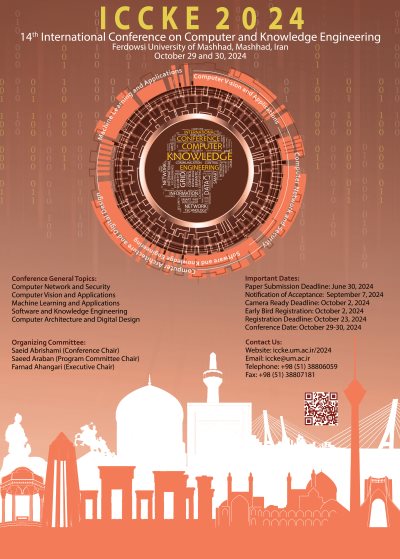0% Complete

Authors :
Keywords :
Abstract :
List of archived papers
Pouya Hosseinzadeh - Yasser Sedaghat - Ahad Harati
Maryam Taghizadeh - Abdolah Chalechale
Shiva Sanati - Mahdi Saadatmand
Hamid Ahmadabadi - Omid Nejati Manzari - Ahmad Ayatollahi
Atieh Mokhtari - Mohammad Taheri
Armin Khayati - Mohammad Taheri - Koorush Ziarati
Hedieh Ahmadi - Seyed Mohammad Hossein Hasheminejad
Hossein Shahinzadeh - Zohreh Azani - Sundus F. Al-Hameedawi - S. Mohammadali Zanjani - Saiedeh Mehrabani-Najafabadi - Mohammadreza Hemmati
Alireza Azadbakht - Saeed Reza Kheradpisheh - Hadi Farahani




